-
 Bitcoin
Bitcoin $116400
-0.36% -
 Ethereum
Ethereum $4033
3.40% -
 XRP
XRP $3.302
-1.26% -
 Tether USDt
Tether USDt $1.000
-0.02% -
 BNB
BNB $796.1
1.67% -
 Solana
Solana $177.8
1.89% -
 USDC
USDC $0.9999
0.00% -
 Dogecoin
Dogecoin $0.2314
4.09% -
 TRON
TRON $0.3381
0.14% -
 Cardano
Cardano $0.7989
1.22% -
 Stellar
Stellar $0.4496
-1.84% -
 Chainlink
Chainlink $20.42
9.42% -
 Hyperliquid
Hyperliquid $41.17
0.88% -
 Sui
Sui $3.914
3.77% -
 Bitcoin Cash
Bitcoin Cash $584.7
1.52% -
 Hedera
Hedera $0.2632
-0.54% -
 Avalanche
Avalanche $24.09
3.40% -
 Ethena USDe
Ethena USDe $1.001
-0.02% -
 Litecoin
Litecoin $123.2
1.33% -
 Toncoin
Toncoin $3.318
-0.04% -
 UNUS SED LEO
UNUS SED LEO $8.984
-0.05% -
 Shiba Inu
Shiba Inu $0.00001323
2.85% -
 Uniswap
Uniswap $10.90
4.41% -
 Polkadot
Polkadot $3.999
3.34% -
 Dai
Dai $1.000
0.01% -
 Cronos
Cronos $0.1630
9.64% -
 Bitget Token
Bitget Token $4.484
0.82% -
 Monero
Monero $272.4
2.44% -
 Pepe
Pepe $0.00001173
6.03% -
 Aave
Aave $290.8
2.88%
Is the three-bottom red turn of the pagoda line accurate? Suitable for short-term operations?
The three-bottom red turn pattern in the pagoda line can be effective for short-term crypto trading, but its accuracy varies with market conditions and requires confirmation with other indicators.
Jun 02, 2025 at 06:15 pm
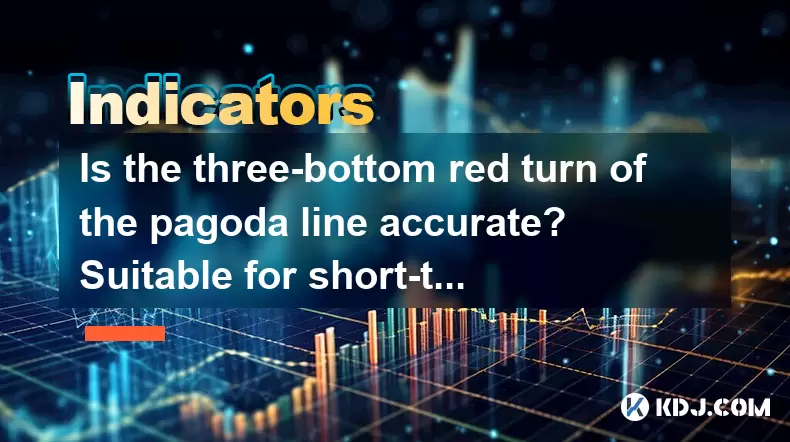
Is the Three-Bottom Red Turn of the Pagoda Line Accurate? Suitable for Short-Term Operations?
The pagoda line, a technical analysis tool used in the cryptocurrency market, has garnered attention for its purported ability to predict price movements. One specific pattern within this tool, the three-bottom red turn, is often discussed for its potential accuracy and suitability for short-term operations. In this article, we will delve into the mechanics of the three-bottom red turn, evaluate its accuracy, and assess its applicability for short-term trading in the crypto market.
Understanding the Pagoda Line and the Three-Bottom Red Turn
The pagoda line is a technical indicator that combines elements of candlestick patterns and moving averages to help traders identify potential trend reversals. It is often visualized as a series of colored lines that oscillate around a central axis, with specific patterns indicating bullish or bearish movements.
The three-bottom red turn is a particular pattern within the pagoda line that traders look for as a signal of a potential upward reversal. This pattern occurs when the pagoda line forms three consecutive red (bearish) bottoms, followed by a turn to a green (bullish) line. The idea is that this pattern signifies the end of a downward trend and the beginning of an upward movement.
Evaluating the Accuracy of the Three-Bottom Red Turn
The accuracy of the three-bottom red turn as a predictive tool can vary depending on several factors, including the specific cryptocurrency being analyzed, the timeframe of the chart, and the overall market conditions.
To assess its accuracy, traders often backtest the pattern on historical data. Backtesting involves applying the three-bottom red turn pattern to past price data to see how often it accurately predicted an upward reversal. For example, if the pattern appeared 100 times in historical data and led to a bullish reversal 70 times, its accuracy rate would be 70%.
While some traders report high accuracy rates, others find that the pattern's effectiveness can be influenced by market volatility and liquidity. In highly volatile markets, false signals may be more common, reducing the reliability of the three-bottom red turn.
Applying the Three-Bottom Red Turn for Short-Term Operations
Short-term operations in the cryptocurrency market often involve trading within a timeframe of minutes to a few days. The suitability of the three-bottom red turn for such operations depends on the trader's ability to quickly identify and act on the pattern.
- Identify the Pattern: The first step is to monitor the pagoda line on a chosen cryptocurrency chart. Look for three consecutive red bottoms followed by a turn to a green line.
- Confirm the Signal: To increase the reliability of the signal, some traders use additional indicators, such as the Relative Strength Index (RSI) or Moving Average Convergence Divergence (MACD), to confirm the potential reversal.
- Enter the Trade: Once the pattern is confirmed, a trader might enter a long position, anticipating a price increase.
- Set Stop-Loss and Take-Profit Levels: To manage risk, it's crucial to set a stop-loss order below the most recent low and a take-profit order at a level that reflects the expected upward movement.
- Monitor and Exit: Continuously monitor the trade and be prepared to exit if the market moves against the expected direction.
Case Studies: Real-World Applications
To illustrate the practical application of the three-bottom red turn, let's look at a couple of case studies involving popular cryptocurrencies like Bitcoin (BTC) and Ethereum (ETH).
Case Study 1: Bitcoin (BTC)
In early 2023, a trader noticed a three-bottom red turn pattern on the 1-hour chart of Bitcoin. The pagoda line had formed three red bottoms, and subsequently turned green. The trader confirmed the signal using the RSI, which was in oversold territory, suggesting a potential reversal.
- Entry Point: The trader entered a long position at $20,000.
- Stop-Loss: A stop-loss was set at $19,800, just below the most recent low.
- Take-Profit: The take-profit was set at $20,500, anticipating a 2.5% increase.
The trade was successful, with Bitcoin reaching the take-profit level within a few hours, resulting in a profitable short-term operation.
Case Study 2: Ethereum (ETH)
In another instance, a trader identified a three-bottom red turn on the 4-hour chart of Ethereum. The pattern was confirmed by the MACD, which showed a bullish crossover.
- Entry Point: The trader entered a long position at $1,500.
- Stop-Loss: A stop-loss was set at $1,480.
- Take-Profit: The take-profit was set at $1,550, expecting a 3.3% increase.
However, this trade did not go as planned. Ethereum failed to reach the take-profit level and instead hit the stop-loss, resulting in a small loss.
Limitations and Considerations
While the three-bottom red turn can be a useful tool for short-term operations, it is not without limitations. False signals can occur, leading to losses if not managed properly. Additionally, the pattern's effectiveness may vary across different cryptocurrencies and market conditions.
Traders should also consider the risk-reward ratio when using the three-bottom red turn. A favorable risk-reward ratio can help mitigate losses from false signals and increase the overall profitability of short-term trading.
Frequently Asked Questions
Q: Can the three-bottom red turn be used on all timeframes?
A: While the three-bottom red turn can theoretically be applied to any timeframe, its effectiveness may vary. Shorter timeframes like 1-hour or 4-hour charts are often used for short-term operations, but traders should test the pattern on different timeframes to understand its performance in their specific trading environment.
Q: How can I improve the accuracy of the three-bottom red turn?
A: To improve accuracy, consider using additional technical indicators to confirm the signal. Tools like RSI, MACD, or volume analysis can provide extra validation of the potential reversal. Additionally, backtesting the pattern on historical data can help you understand its performance in different market conditions.
Q: Is the three-bottom red turn suitable for beginners?
A: The three-bottom red turn can be complex for beginners due to its reliance on specific chart patterns and the need for quick decision-making in short-term operations. Beginners should start with simpler trading strategies and gradually incorporate more advanced tools like the pagoda line as they gain experience.
Q: Can the three-bottom red turn be used in conjunction with other trading strategies?
A: Yes, the three-bottom red turn can be integrated into broader trading strategies. For example, it can be used as a signal within a trend-following strategy or as part of a mean reversion approach. Combining it with other tools and strategies can help traders make more informed decisions and manage risk more effectively.
Disclaimer:info@kdj.com
The information provided is not trading advice. kdj.com does not assume any responsibility for any investments made based on the information provided in this article. Cryptocurrencies are highly volatile and it is highly recommended that you invest with caution after thorough research!
If you believe that the content used on this website infringes your copyright, please contact us immediately (info@kdj.com) and we will delete it promptly.
- SHIB Price, Meme Coin Mania, and the 250x Potential Hunt
- 2025-08-09 16:30:13
- SOL, ETFs, and AI: Crypto's Triple Threat Sensation!
- 2025-08-09 17:10:12
- Tokenized Stock on Solana: SOL Price Reacts to Exodus's Bold Move
- 2025-08-09 17:10:12
- Meme Coins on Blockchains in 2025: Hype or the Future?
- 2025-08-09 16:50:11
- World Liberty Financial, Public Listing, and WLFI Tokens: A New York Minute on the Trump-Backed Crypto Venture
- 2025-08-09 16:50:11
- Holy Grail Coin Hunting: Rare Errors and Value Increases You Need to Know!
- 2025-08-09 16:30:13
Related knowledge

What does it mean when the Triple Moving Average (TRIX) turns downward but the price doesn't fall?
Aug 09,2025 at 12:42pm
Understanding the Triple Moving Average (TRIX) IndicatorThe Triple Moving Average, commonly known as TRIX, is a momentum oscillator designed to filter...

What does it mean when the Williams' oscillator repeatedly hits bottoms but fails to rebound?
Aug 09,2025 at 09:28am
Understanding the Williams %R OscillatorThe Williams %R oscillator, developed by Larry Williams, is a momentum indicator used in technical analysis to...
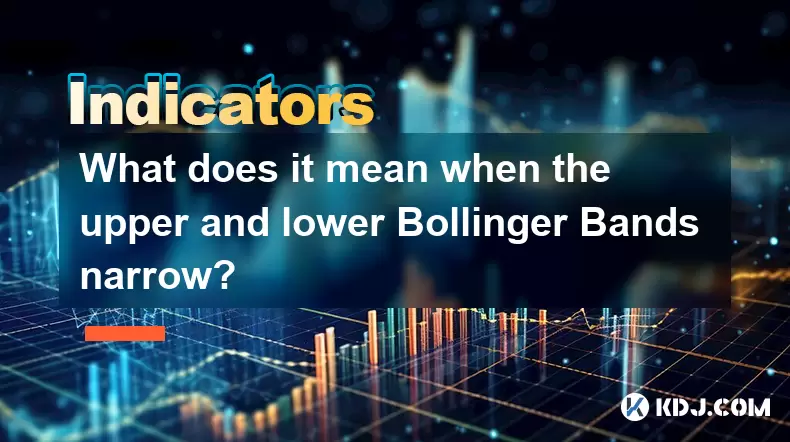
What does it mean when the upper and lower Bollinger Bands narrow?
Aug 09,2025 at 03:00pm
Understanding Bollinger Bands in Cryptocurrency TradingBollinger Bands are a widely used technical analysis tool in the cryptocurrency market, develop...
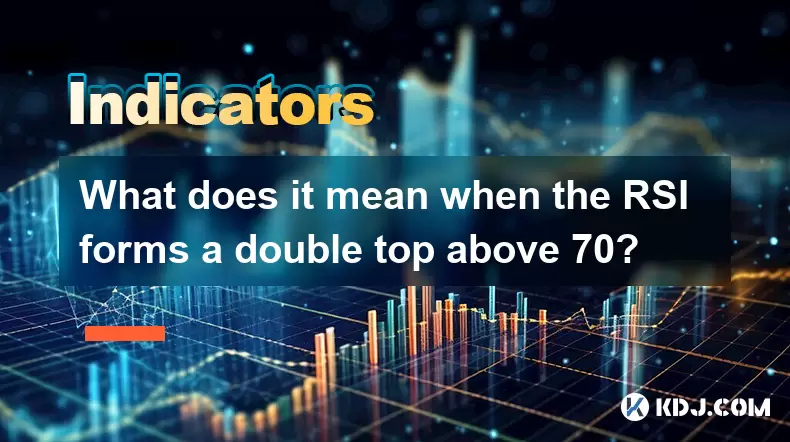
What does it mean when the RSI forms a double top above 70?
Aug 09,2025 at 05:50pm
Understanding the RSI and Overbought ConditionsThe Relative Strength Index (RSI) is a momentum oscillator that measures the speed and change of price ...
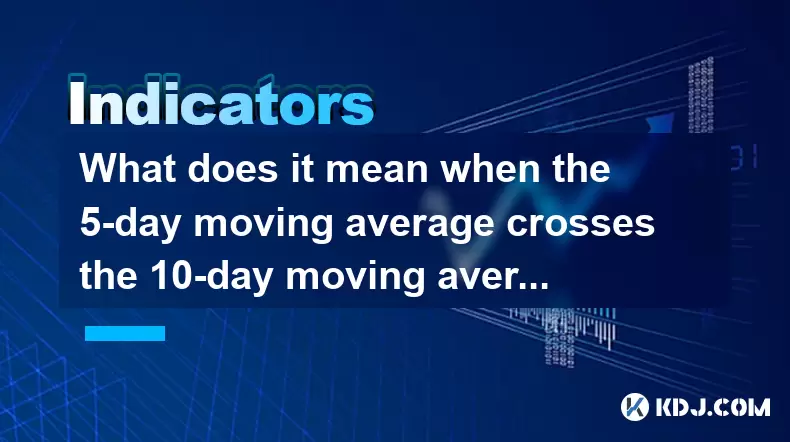
What does it mean when the 5-day moving average crosses the 10-day moving average but the 20-day moving average remains upward?
Aug 09,2025 at 03:35pm
Understanding Moving Averages in Cryptocurrency TradingMoving averages are foundational tools in technical analysis, especially within the cryptocurre...
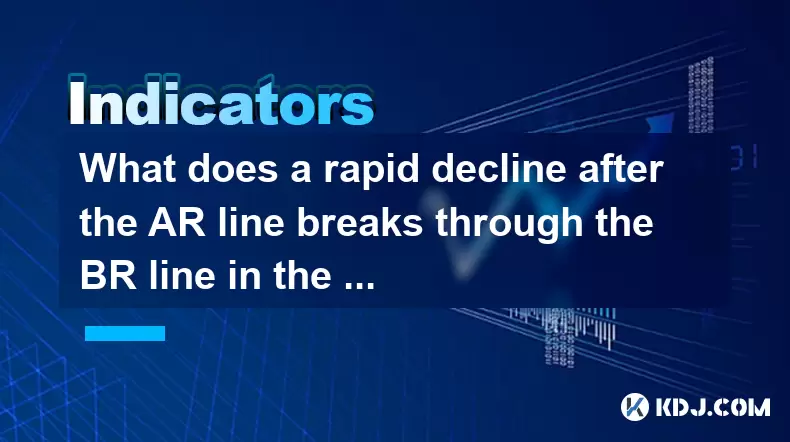
What does a rapid decline after the AR line breaks through the BR line in the ARBR indicator indicate?
Aug 09,2025 at 04:42pm
Understanding the ARBR Indicator ComponentsThe ARBR indicator is a technical analysis tool that combines two oscillators: the AR (Amplitude Ratio) and...

What does it mean when the Triple Moving Average (TRIX) turns downward but the price doesn't fall?
Aug 09,2025 at 12:42pm
Understanding the Triple Moving Average (TRIX) IndicatorThe Triple Moving Average, commonly known as TRIX, is a momentum oscillator designed to filter...

What does it mean when the Williams' oscillator repeatedly hits bottoms but fails to rebound?
Aug 09,2025 at 09:28am
Understanding the Williams %R OscillatorThe Williams %R oscillator, developed by Larry Williams, is a momentum indicator used in technical analysis to...

What does it mean when the upper and lower Bollinger Bands narrow?
Aug 09,2025 at 03:00pm
Understanding Bollinger Bands in Cryptocurrency TradingBollinger Bands are a widely used technical analysis tool in the cryptocurrency market, develop...

What does it mean when the RSI forms a double top above 70?
Aug 09,2025 at 05:50pm
Understanding the RSI and Overbought ConditionsThe Relative Strength Index (RSI) is a momentum oscillator that measures the speed and change of price ...

What does it mean when the 5-day moving average crosses the 10-day moving average but the 20-day moving average remains upward?
Aug 09,2025 at 03:35pm
Understanding Moving Averages in Cryptocurrency TradingMoving averages are foundational tools in technical analysis, especially within the cryptocurre...

What does a rapid decline after the AR line breaks through the BR line in the ARBR indicator indicate?
Aug 09,2025 at 04:42pm
Understanding the ARBR Indicator ComponentsThe ARBR indicator is a technical analysis tool that combines two oscillators: the AR (Amplitude Ratio) and...
See all articles

























































































